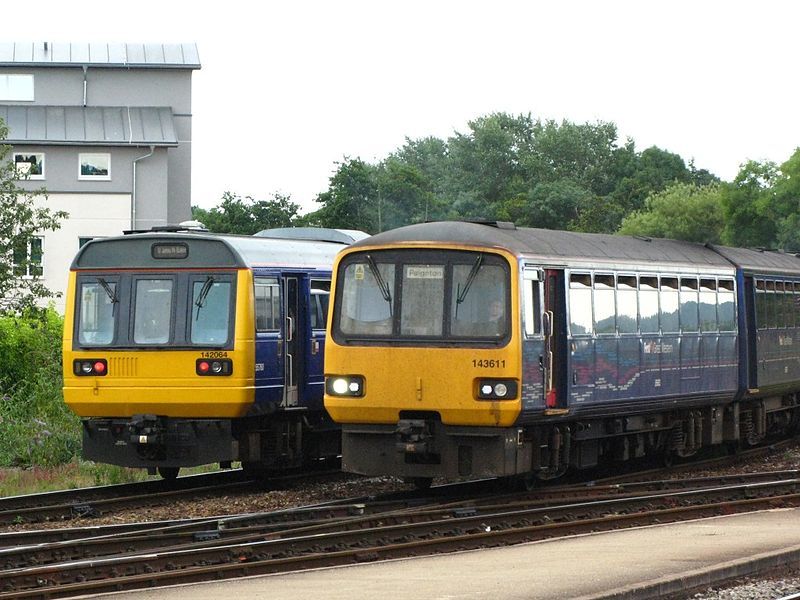
Built in the 1980s, Pacers have been a standard mode of public transport in this country for far longer than they were meant to be.
They look like trains and run on normal railway tracks, but they are old Leyland Motors bus frames mounted on train wheels.
Intended as a temporary measure to fill the gap during a shortage of rolling stock, they were meant to keep us on the move for a couple of decades maximum.
But it is only now that the powers-that-be have decided the Pacer really has seen better days and will be retired shortly.
Regular users say they are very bouncy and noisy, with rattles and shudders to knock your false teeth out if you don’t hang on tight.
OK, we’re exaggerating a bit, but they aren’t the most luxurious trains in Britain.
Believe it or not, there are still more than 200 of these diesel-powered Pacer carriages bashing around parts of England and Wales.
Rail bosses in England’s North-East, where most of them ply their trade, have vowed to get them out of service — at long last — by around 2020.
With just four wheels instead of the normal eight, their lack of bogies explains all that shaking, shuddering and noise.
With one less layer of suspension springs, you’ll definitely know you have been on a journey, that’s for sure.
With a top speed of 75mph, they also make a very noisy screech when running across curved tracks, so everyone within earshot will know a Pacer has just blasted through town.
Actually, they were supposed to be used on rural lines and quieter areas, but have often been used in the likes of Manchester and Leeds, along with Cardiff.
To the experts, however, the Pacer has done a remarkable job.
In their eyes, it was a clever way to fill a gap, and has saved lots of money.
While rolling stock was scarce, bus companies were under pressure to sell plenty single-decker buses, known as The National, and they put both problems together and came up with a cracking — albeit noisy — solution.
When one bright spark came up with the notion of taking a bus body and placing it on a rail track, it was just the job.
But not even he would have dreamed the Pacer would still be roaring around in the year 2016.
The first one went into service in 1980, with seating capacity limited because of that narrower bus shape.
There was just one door either side of the carriage.
There was also a wider gap between the “train” and station platforms.
We even cheekily tried to export the old buses at one point!
Sadly, after the USA and Canada set eyes on the Pacer, they said: “No, thank you,” and Belgium and Sweden were equally underwhelmed.
It is claimed that one was sent to Thailand, later being moved to Malaysia and then on to Indonesia, but nobody is quite sure where it is these days.
It should be easy enough to find, though — it’ll be heard before it’s seen!
READ MORE
Trainspotter visits all 2,500 stations in the UK for new book
Investigation into late trains in Scotland reveals shocking problems

Enjoy the convenience of having The Sunday Post delivered as a digital ePaper straight to your smartphone, tablet or computer.
Subscribe for only £5.49 a month and enjoy all the benefits of the printed paper as a digital replica.
Subscribe